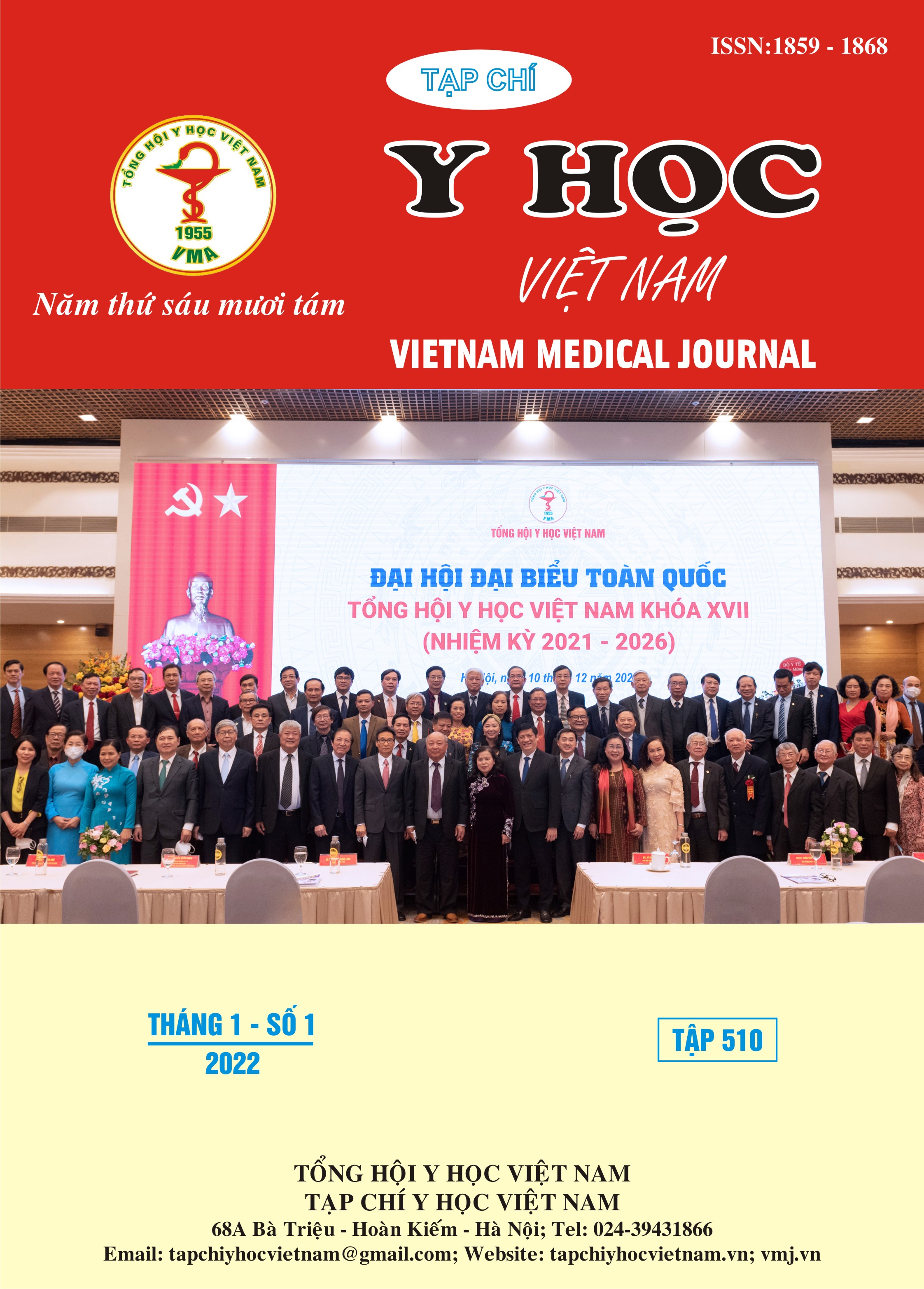ĐẶC ĐIỂM VI KHUẨN TRONG BỆNH VIÊM QUANH RĂNG PHÁ HUỶ THẾ TOÀN BỘ
Nội dung chính của bài viết
Tóm tắt
Bệnh quanh răng là bệnh nhiễm khuẩn do sự tích tụ vi khuẩn (VK) ở mảng bám dưới lợi. Viêm quanh răng (VQR) phá huỷ (aggressive periodontitis) là bệnh phá huỷ tổ chức quanh răng (QR), gây mất bám dính và tiêu xương ổ răng nhanh, ít tương ứng với tình trạng viêm tại chỗ. Bệnh thường gặp ở người trẻ tuổi khoẻ mạnh với tỷ lệ mắc bệnh thấp.1,2 Tổn thương tổ chức QR có nhiều nguyên nhân gây nên trong đó có một số VK đặc trưng gây bệnh như Aggregatibacter actynomycestemcomytan, porphymonas gingivalis, parvimonas micra,.... Xác định một số VK gây bệnh VQR phá huỷ thể toàn bộ ở 35 bệnh nhân được chẩn đoán là có VQR phá huỷ thể toàn bộ, độ tuổi từ 15 - 45 tuổi, được lấy mẫu mảng bám dưới lợi. VK được phát hiện bằng kỹ thuật nuôi cấy VK kỵ khí và kỹ thuật sinh học phân tử (PCR) để định danh một số VK gây bệnh. Tỷ lệ các VK được định danh bằng kỹ thuật nuôi cấy kỵ khí và sinh học phân tử (PCR): Aggregatibacter actinomycetemcomitans 11,4%, Porphymonas gingivalis 0%, Fushobacterium nucleatum 0%, Tannerella forsythia 5,7%, Parvimonas micra 11,4%, Veillonella parvula 45,7%, Campylobacter showae 5,7%, Prevotella intermedia 22,9%, Trenponema dencota 11,4%. Có sự liên quan giữa sự phát hiện VK với các biểu hiện lâm sàng như mức độ viêm lợi, độ sâu túi QR và mức độ mất bám dính lâm sàng (p<0,05), không có sự liên quan giữa tình trạng vệ sinh răng miệng với sự phát hiện các VK.
Chi tiết bài viết
Từ khóa
Viêm quanh răng phá huỷ thể toàn bộ
Tài liệu tham khảo
2. Olanrewaju Onabolu et al, 2015, Periodontal progression based on radiographic records: An observational study in chronic and aggressive periodontitis. J Dent. 2015 Jun;43(6):673-682.
3. Eija Kononen et al, (2014). Microbiology of aggressive periodontitis Periodontology 2000, Vol. 65, 46–78.
4. Paul M, 2005. Prevalence analysis of putative periodontal pathogens in patients with aggressive periodontitis and healthy elderly. A molecular study. Dissertation. Doctor of Medicine. University Medicine Berlin.
5. Cristiano Susin et al, 2014. Epidemiology and demographics of aggressive periodontitis. Periodontology 2000, Vol. 65, page 27–45
6. SusanneSchulz et al (2019), Comparison of the oral microbiome of patients with generalized aggressive periodontitis and periodontitis-free subjects, Archives of Oral Biology, Volume 99, March 2019, Pages 169-176
7. Marıa Mınguez et al (2014). Characterization and serotype distribution of Aggregatibacter actinomycetemcomitans isolated from a population of periodontitis patients in Spain. Archives of oral biology. 59 . 1359 – 1367.
8. Heller D et al (2011), Impact of systemic antimicrobials combined with anti-infective mechanical debridement on the microbiota of generalized aggressive periodontitis: a 6-month RCT. J Clin Periodontol: 38: 355–364.
9. Rylev M et al (2011). Microbiological and immunological characteristics of young Moroccan patients with aggressive periodontitis with and without detectable Aggregatibacter actinomycetemcomitans JP2 infection. Mol Oral Microbiol: 26.


